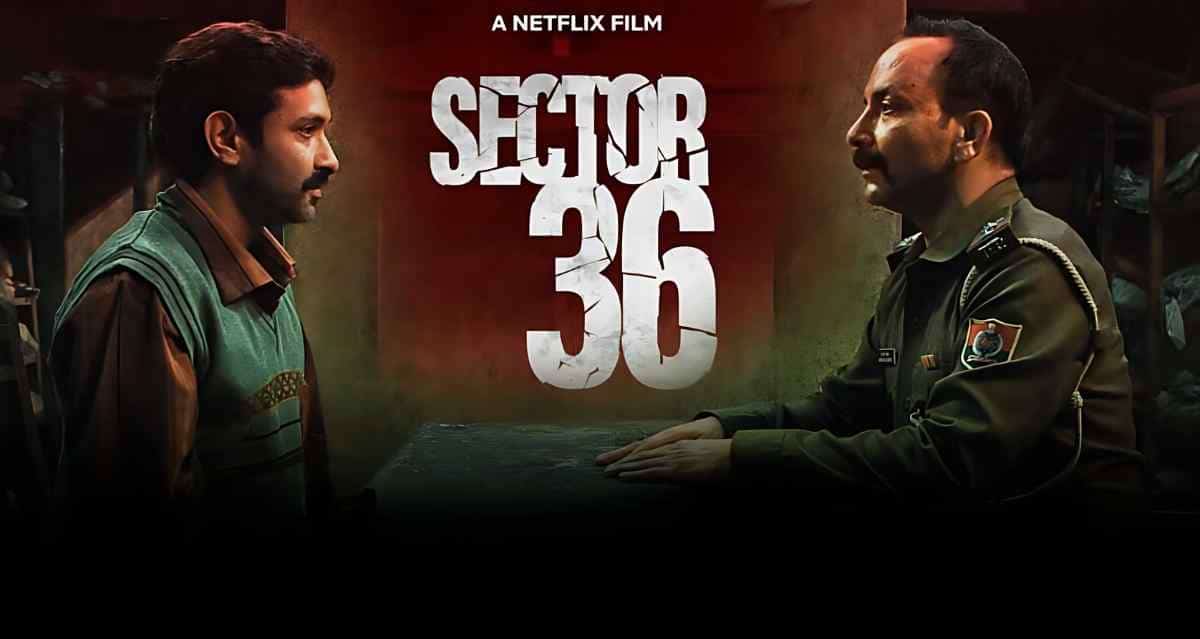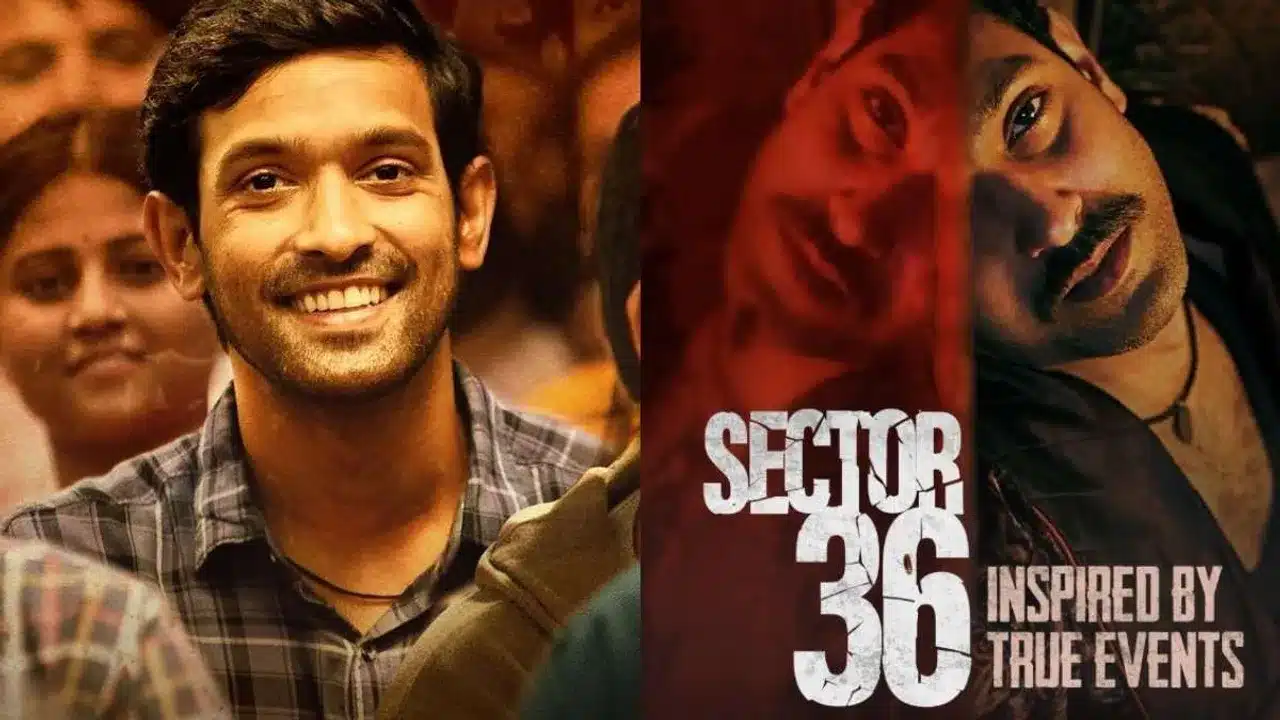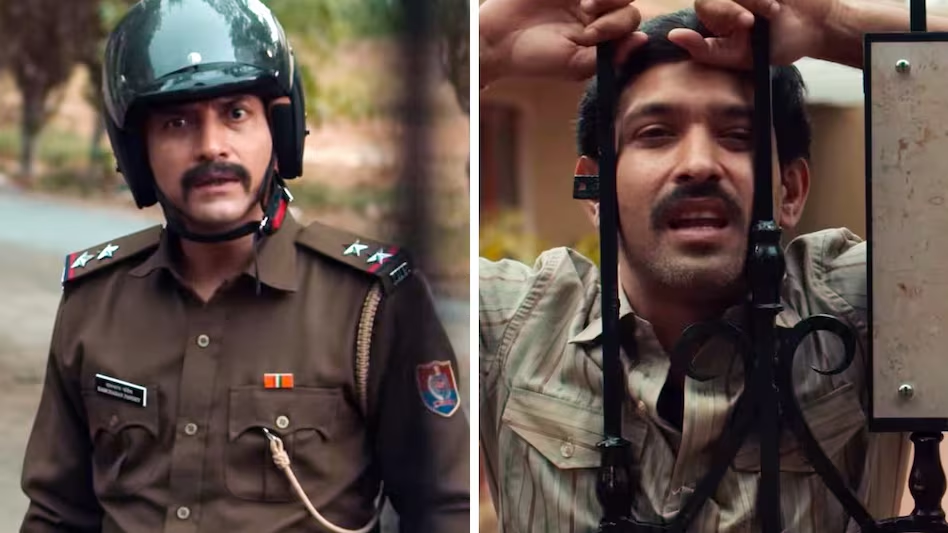Sector 36 Movie Review:
In 2024, Bollywood has delivered a new crime drama that is shaking up the genre—Sector 36. Directed by Aditya Nimbalkar and produced by Dinesh Vijan under Maddock Films, the movie dives into the dark underbelly of crime, corruption, and justice. While crime thrillers are a staple in Bollywood, Sector 36 stands out for its unique narrative, gripping performances, and an immersive atmosphere that lingers long after the credits roll. This review breaks down the plot, performances, direction, and how the film manages to hold its own in an increasingly competitive genre.
Plot Overview
Sector 36 Movie Review: Sector 36 centers around Shivani Bhargava (played by Divya Dutta), an honest and sharp-tongued senior officer working in Delhi’s Sector 36 police station. Alongside her is her trusted junior, Inspector Raghav (played by Vikrant Massey), a driven but emotionally scarred cop who is haunted by a personal tragedy. The story begins with a high-profile murder that rocks the capital city. What seems like a routine homicide investigation quickly spirals into a dangerous game of power, politics, and deceit.
As Shivani and Raghav dig deeper into the case, they uncover a web of corruption that extends far beyond the police department. The film exposes how influential individuals in politics and business exploit the system, making it difficult for honest officers to serve justice. The case becomes a metaphor for the larger, systemic failures in law enforcement, and soon the duo finds themselves in the crosshairs of a syndicate that will stop at nothing to maintain their grip on the city.
With a tightly woven narrative, Sector 36 slowly unpacks its layers, each revealing a deeper and more sinister conspiracy. The film raises timely questions about the nature of justice and the ethical dilemmas faced by those in power.
Performances: Powerhouses of Talent
Sector 36 Movie Review: The film boasts a stellar cast that brings raw intensity to the screen. Divya Dutta as Shivani Bhargava is, without a doubt, the backbone of the film. Known for her ability to deliver emotionally charged performances, Dutta infuses Shivani with a blend of resilience, vulnerability, and fierce determination. Her portrayal of a police officer fighting against a corrupt system feels deeply authentic, adding gravitas to the story. Whether she’s engaging in intense confrontations with suspects or dealing with the emotional toll of the job, Dutta shines throughout.
Vikrant Massey, on the other hand, brings depth to his character, Raghav. His role as a tormented cop struggling with his own demons is both compelling and heartbreaking. Massey portrays the vulnerability and frustration of a man torn between duty and personal vendettas with finesse. His chemistry with Dutta’s character is subtle but effective, with their mentor-mentee dynamic offering one of the film’s emotional cores. Massey’s controlled performance, particularly in scenes where his inner conflict is at its peak, further elevates the tension of the movie.
Supporting roles are handled expertly as well. Richa Chadda makes a strong appearance as a corrupt politician entangled in the crime syndicate, and her interactions with Dutta’s character are electric. Each of these performances adds a layer of authenticity to the film’s portrayal of a deeply corrupt and fractured society.
Direction: A Gripping Narrative with Tight Execution
Sector 36 Movie Review: Aditya Nimbalkar’s direction in Sector 36 deserves special praise. Known for his work as an assistant director in films like Paatal Lok, Nimbalkar brings his flair for tension-building and character-driven storytelling to his directorial debut. His vision of Sector 36 is dark, gritty, and unsettling—an environment where no one is truly safe, and every decision has dire consequences.
Nimbalkar keeps the pacing tight, never allowing the film to lose its momentum. The audience is constantly kept on edge as the story progresses from one unpredictable twist to another. While the first half of the film sets the stage for the investigation, it’s the second half where the narrative really picks up speed. By the final act, viewers are left breathless as the truth about the crime—and the web of corruption surrounding it—is finally revealed.
The director also uses the setting of Delhi’s urban sprawl as a character in itself. The visuals alternate between dimly lit, claustrophobic police stations and sprawling, opulent bungalows, symbolizing the stark divide between those who uphold the law and those who manipulate it. The film is not merely a whodunit; it is a socio-political commentary on the power dynamics that pervade Indian society.
Cinematography and Production Design: Grit and Gloom
Visually, Sector 36 is captivating in its stark realism. The cinematography by Anuj Rakesh Dhawan captures the grime and grit of urban life in Delhi, making the city feel almost alive—its dark alleyways, cramped spaces, and dilapidated buildings adding to the tension of the narrative. The gloomy tones employed in the cinematography complement the film’s heavy subject matter, reinforcing the suffocating atmosphere that characters like Shivani and Raghav navigate.
Production designer Saini S. Johray carefully crafts every environment, from police stations stacked with files of unsolved cases to the luxurious homes of the corrupt elite. The visual aesthetic of the film mirrors the moral decay it portrays—every scene is drenched in a sense of unease, symbolizing the rot that lies at the heart of the system.
Themes and Symbolism: Exploring Power and Justice
Sector 36 is more than just a crime thriller—it’s a profound exploration of justice, corruption, and the moral dilemmas faced by law enforcement. One of the film’s central themes is the struggle between individual morality and systemic corruption. Shivani’s character symbolizes the ideal of an incorruptible officer, someone who believes in the integrity of the law despite overwhelming odds. Raghav, on the other hand, represents the internal conflict faced by many officers—a man caught between doing his duty and exacting personal vengeance.
The film also uses the city of Delhi as a metaphor for the decaying system. The sprawling metropolis, with its bustling streets and ominous undercurrents, reflects the state of law enforcement—overburdened, chaotic, and under constant threat from those it’s meant to serve. Corruption, power, and impunity are key motifs that thread through the narrative, with every character’s actions reflecting their proximity to these forces.
Music and Sound Design: Amplifying the Tension
The background score in Sector 36 is haunting and atmospheric, complementing the overall mood of the film. While there are no over-the-top musical sequences (which is a blessing in a film like this), the music plays a crucial role in heightening tension during key moments. Sneha Khanwalkar, the music composer, creates a soundtrack that keeps viewers on edge without distracting from the film’s core themes.
Sound design is equally commendable. From the subtle background noises of police radio chatter to the high-octane chase sequences, every auditory element is finely tuned to add to the realism and tension of the story. The film’s soundscape envelops the audience in a world where every whispered conversation or creaking door could hold dangerous secrets.
Pacing and Editing: Tight and Tense
The editing in Sector 36 is sharp and efficient. At no point does the film drag, and the transitions between scenes are seamless. The editors, Parvez Shaikh and Charu Takkar, manage to maintain a breakneck pace without overwhelming the audience with too much information at once. Instead, they allow the story to unfold organically, giving each plot twist the space it needs to land with maximum impact.
The film clocks in at just over two hours, and the pacing is tight enough that there’s hardly a dull moment. Even in its quieter, more introspective scenes, the film builds an undercurrent of tension that keeps viewers invested.
Social Commentary: A Reflection of Reality
What makes Sector 36 especially resonant is how closely it mirrors real-life issues. The film doesn’t shy away from showcasing the challenges faced by honest police officers in a system rife with corruption. The characters, particularly Shivani and Raghav, embody the struggle of many law enforcement officials who find themselves pitted against not just criminals, but also the very institutions that are supposed to support them.
By highlighting the rot within the system, the film serves as a stark reminder of the real-world consequences of unchecked power and corruption. The challenges that the characters face in bringing criminals to justice—whether due to bureaucratic red tape, political interference, or institutional apathy—are all too familiar in contemporary India. Sector 36 offers a sobering reflection on the need for reform and accountability within law enforcement and the judicial system.
Final Thoughts: A Must-Watch Crime Drama
In a genre filled with formulaic narratives and predictable plot twists, Sector 36 distinguishes itself as a gripping and thought-provoking film that doesn’t shy away from tackling complex issues. With its stellar performances, tight direction, and a narrative that keeps viewers on the edge of their seats, it’s a film that will stay with you long after the credits roll.
Divya Dutta’s powerhouse performance, along with Vikrant Massey’s nuanced portrayal of a conflicted cop, forms the emotional core of the movie. Combined with Aditya Nimbalkar’s sharp direction and the film’s atmospheric cinematography, Sector 36 emerges as one of the most compelling Bollywood films of 2024.
Whether you’re a fan of crime thrillers or someone looking for a film that tackles societal issues head-on, Sector 36 is a must-watch. It not only entertains but also provokes, offering a powerful commentary on the fragile line between justice and power.
FAQs
1. What is the plot of Sector 36?
Sector 36 revolves around an honest senior officer, Shivani Bhargava, and her junior, Inspector Raghav, who investigate a high-profile murder in Delhi. The case unravels a deeper web of corruption, power, and deceit, exposing the systemic failures in law enforcement.
2. Who are the lead actors in Sector 36?
The film stars Divya Dutta as Shivani Bhargava, the senior police officer, and Vikrant Massey as Inspector Raghav. Both actors deliver powerful performances, portraying the moral and emotional struggles of law enforcement officers.
3. What makes Sector 36 stand out in the crime thriller genre?
Sector 36 distinguishes itself with its gritty narrative, strong performances, and socio-political commentary on corruption within the police force. The film delves deeper into systemic issues and power dynamics, making it more than just a typical crime thriller.
4. Who directed Sector 36, and what is the film's visual style?
Sector 36 is directed by Aditya Nimbalkar, marking his directorial debut. The film’s visual style is gritty and realistic, with the cinematography capturing the urban sprawl of Delhi, emphasizing the contrast between law enforcers and the corrupt elite.
5. What themes are explored in Sector 36?
The film explores themes of justice, corruption, power, and the moral dilemmas faced by law enforcement officers. It examines the personal and professional conflicts of those caught in a corrupt system, reflecting real-world societal issues.








